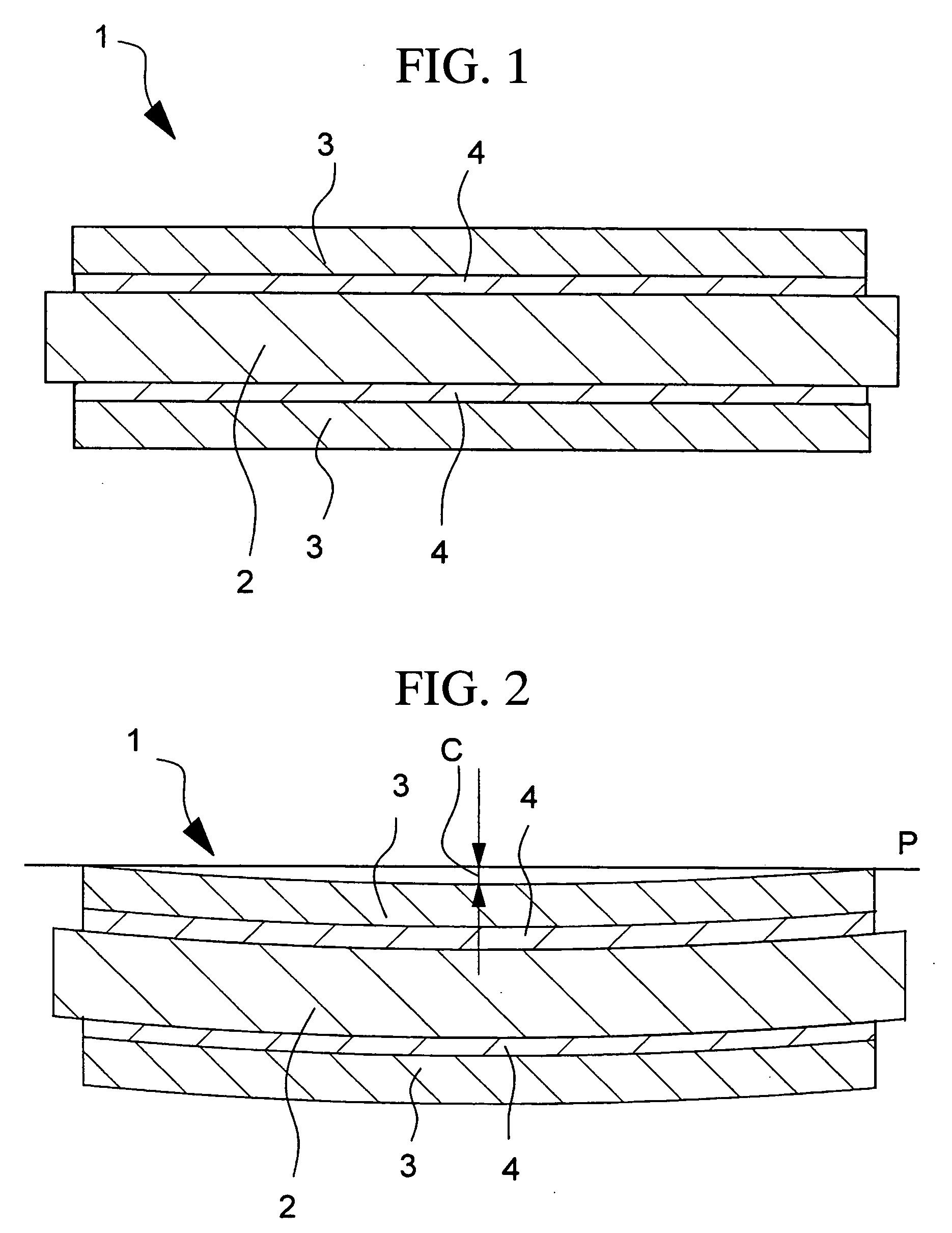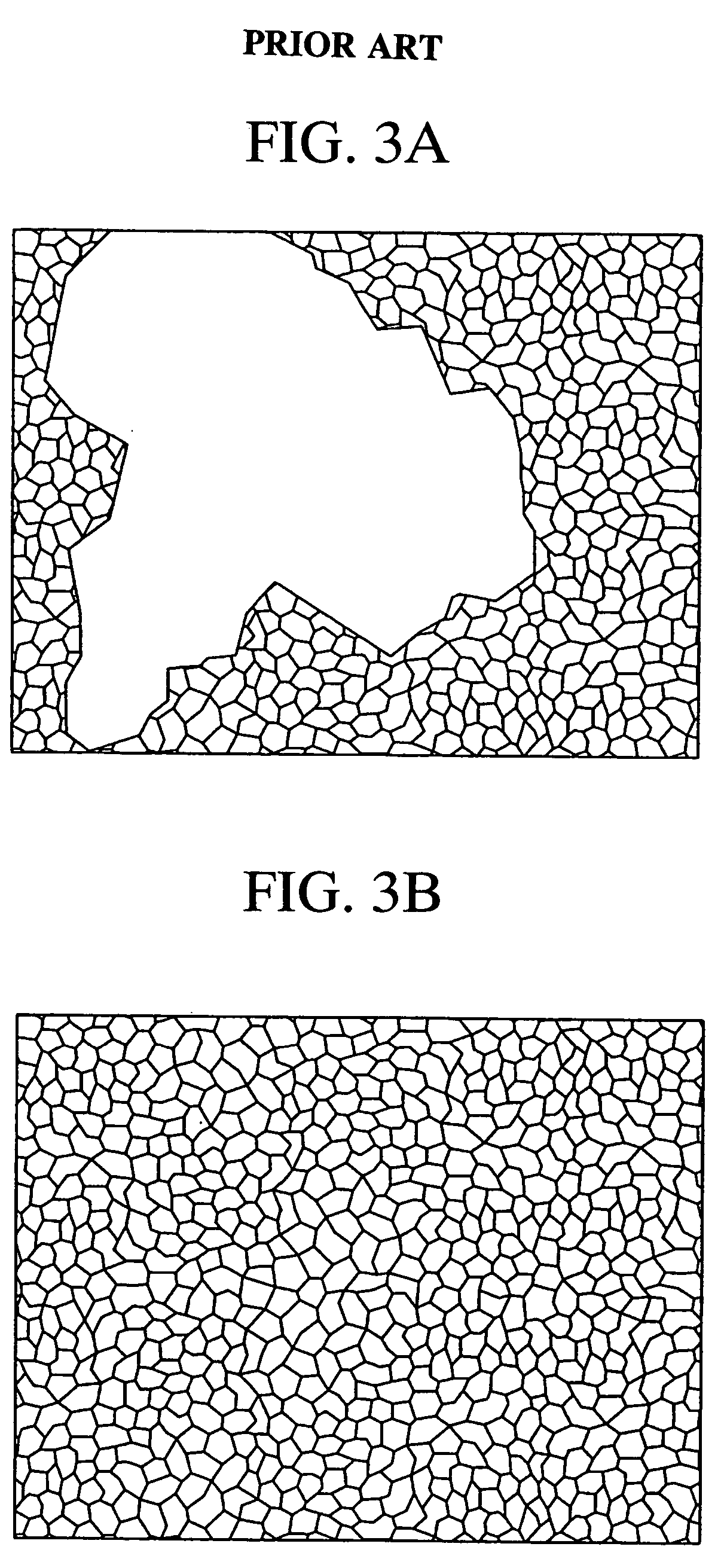Circuit board, process for producing the same, and power module
- Summary
- Abstract
- Description
- Claims
- Application Information
AI Technical Summary
Benefits of technology
Problems solved by technology
Method used
Image
Examples
example 1
[0057] A power module of the structure shown in FIG. 4 was prepared.
[0058] On both surfaces of an AlN ceramic substrate 2 of dimensions 50 mm×50 mm×0.635 mm were bonded Al plates 3 with the same length and width dimensions as the insulating ceramic substrate 2 but with a thickness of 0.4 mm, thus preparing a circuit board 1. The Al plates 3 were prepared by a final heat treatment at 450° C., followed by rolling with a draft of 30%, and comprised 99.99% by mass of Al, as well as 23 ppm of Cu, 30 ppm of Si, and 33 ppm of Fe. The brazing material 4 used an Al—Si based brazing material comprising 8% by mass of Si. The melting point of this brazing material was 626° C. With an Al plate 3, a sheet of the Al—Si based brazing material 4, the insulating ceramic substrate 2, another sheet of the Al—Si based brazing material 4, and another Al plate 3 overlaid on top of one another, in that order, the layers were bonded together by subjecting the layered structure to a pressure of 200 kPa, hea...
PUM
| Property | Measurement | Unit |
|---|---|---|
| Temperature | aaaaa | aaaaa |
| Fraction | aaaaa | aaaaa |
| Fraction | aaaaa | aaaaa |
Abstract
Description
Claims
Application Information
 Login to View More
Login to View More - R&D
- Intellectual Property
- Life Sciences
- Materials
- Tech Scout
- Unparalleled Data Quality
- Higher Quality Content
- 60% Fewer Hallucinations
Browse by: Latest US Patents, China's latest patents, Technical Efficacy Thesaurus, Application Domain, Technology Topic, Popular Technical Reports.
© 2025 PatSnap. All rights reserved.Legal|Privacy policy|Modern Slavery Act Transparency Statement|Sitemap|About US| Contact US: help@patsnap.com



